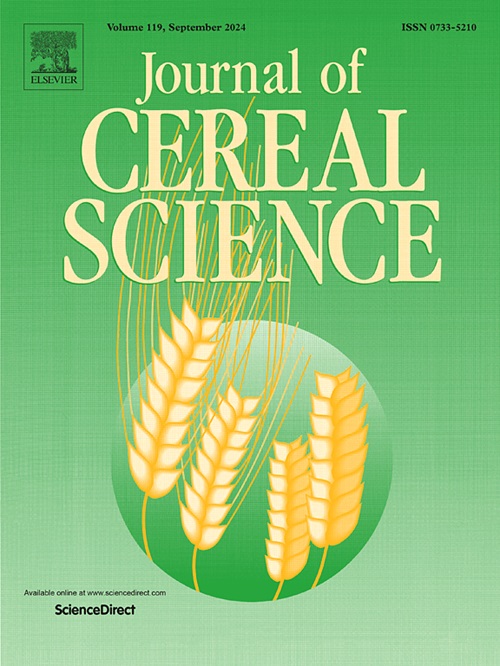Evaluation of the 100-year evolution of TZARI bread wheat variety development program in terms of bread-making and nutritional quality
IF 3.7
2区 农林科学
Q2 FOOD SCIENCE & TECHNOLOGY
引用次数: 0
Abstract
This study examined genetic gain in the Eskişehir Transitional Zone Agricultural Research Institute (TZARI) bread wheat breeding program, which started in 1925 and has been continuing for about a century, in terms of grain physical characteristics, gluten quality, nutritional, dough rheology, and bread properties. The recent varieties had higher thousand kernel weights of about 35.0 g. During the breeding period, there was a 0.5 % decline in grain protein content and a 5 % decrease in gluten content. Conversely, a 10–15 ml increase in sedimentation, 20 % in gluten index, and 100–200 cm2 in GlutoPeak aggregation energy (AGGEN) were observed. Mixograph peak area (TINT) values exceeded 100.0 % torque x min in the latest cultivars. Some of the most recent genotypes had bread volumes greater than 480.0 cm3/100 g. In general, high gluten-quality varieties presented reduced crumb firmness for a five-day duration. The phenolics, dietary fiber, and antioxidant activity did not significantly correlate with the released years. Some of the latest cultivars had high gluten quality and high antioxidant activity, phenolics, minerals, and amino acids. However, when assessed generally during the breeding stage, lysine, methionine, leucine, phenylalanine, and histidine contents significantly decreased in the varieties after the 2000s. Also, a significant decrease was determined in phosphorus, potassium, and zinc contents.

从面包制作和营养品质方面评价TZARI面包小麦品种发展计划的百年演变
这项研究考察了eski过渡区农业研究所(TZARI)面包小麦育种计划的遗传收益,该计划始于1925年,已经持续了大约一个世纪,涉及谷物物理特性、面筋质量、营养、面团流变学和面包特性。近期品种千粒重较高,约为35.0 g。在育种期间,籽粒蛋白质含量下降0.5%,面筋含量下降5%。相反,沉降量增加10-15 ml,面筋指数增加20%,glutoppeak聚集能(AGGEN)增加100-200 cm2。最新品种的混合峰面积(TINT)值超过100.0%。一些最新基因型的面包体积大于480.0 cm3/100 g。一般来说,高麸质品种在5天的时间内呈现出面包屑硬度降低的现象。酚类物质、膳食纤维和抗氧化活性与释放年限没有显著相关。一些最新品种具有高面筋品质和高抗氧化活性、酚类物质、矿物质和氨基酸。然而,在育种阶段的总体评估中,2000年以后品种的赖氨酸、蛋氨酸、亮氨酸、苯丙氨酸和组氨酸含量显著下降。此外,磷、钾和锌的含量也显著降低。
本文章由计算机程序翻译,如有差异,请以英文原文为准。
求助全文
约1分钟内获得全文
求助全文
来源期刊

Journal of Cereal Science
工程技术-食品科技
CiteScore
7.80
自引率
2.60%
发文量
163
审稿时长
38 days
期刊介绍:
The Journal of Cereal Science was established in 1983 to provide an International forum for the publication of original research papers of high standing covering all aspects of cereal science related to the functional and nutritional quality of cereal grains (true cereals - members of the Poaceae family and starchy pseudocereals - members of the Amaranthaceae, Chenopodiaceae and Polygonaceae families) and their products, in relation to the cereals used. The journal also publishes concise and critical review articles appraising the status and future directions of specific areas of cereal science and short communications that present news of important advances in research. The journal aims at topicality and at providing comprehensive coverage of progress in the field.
 求助内容:
求助内容: 应助结果提醒方式:
应助结果提醒方式:


